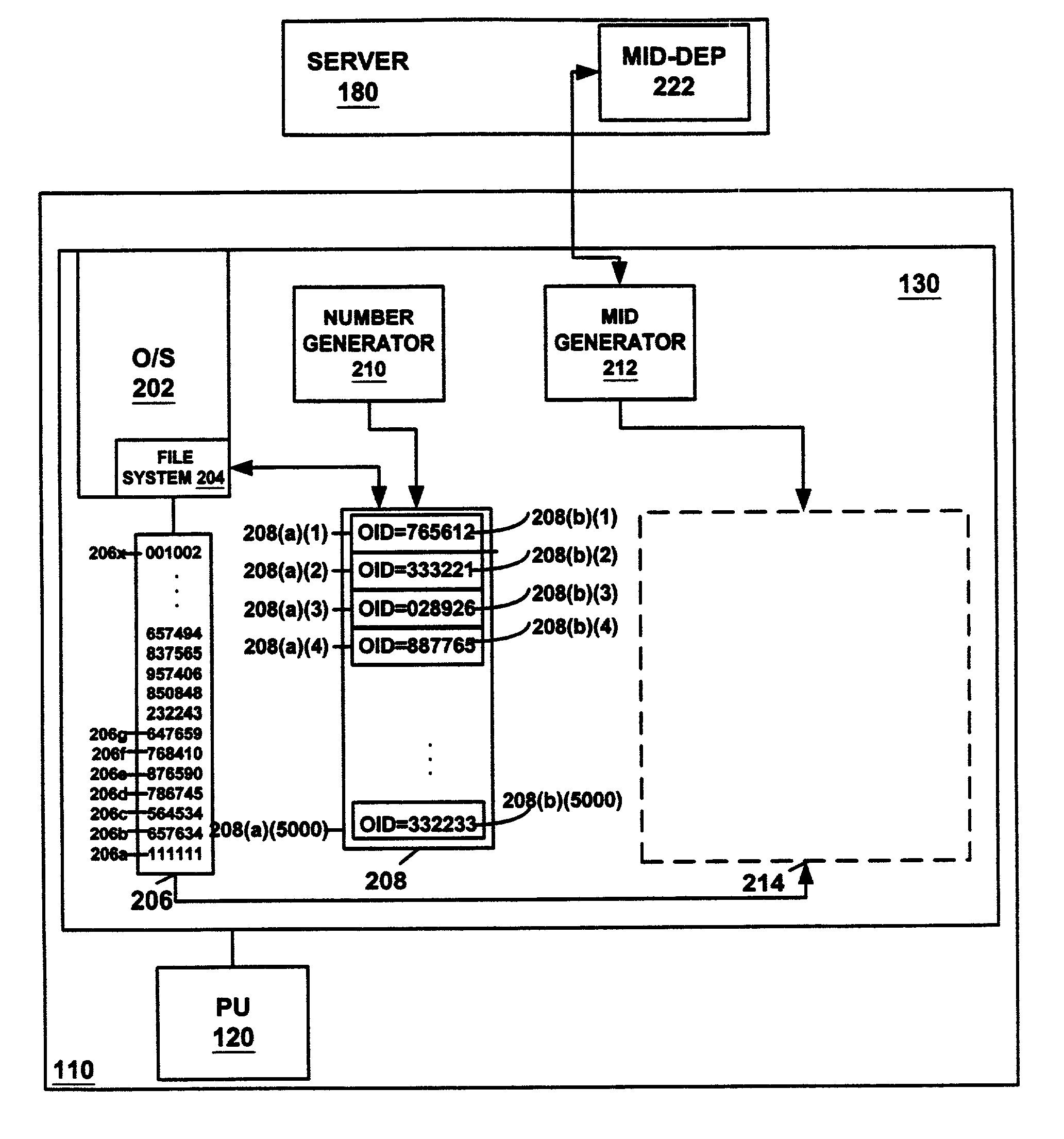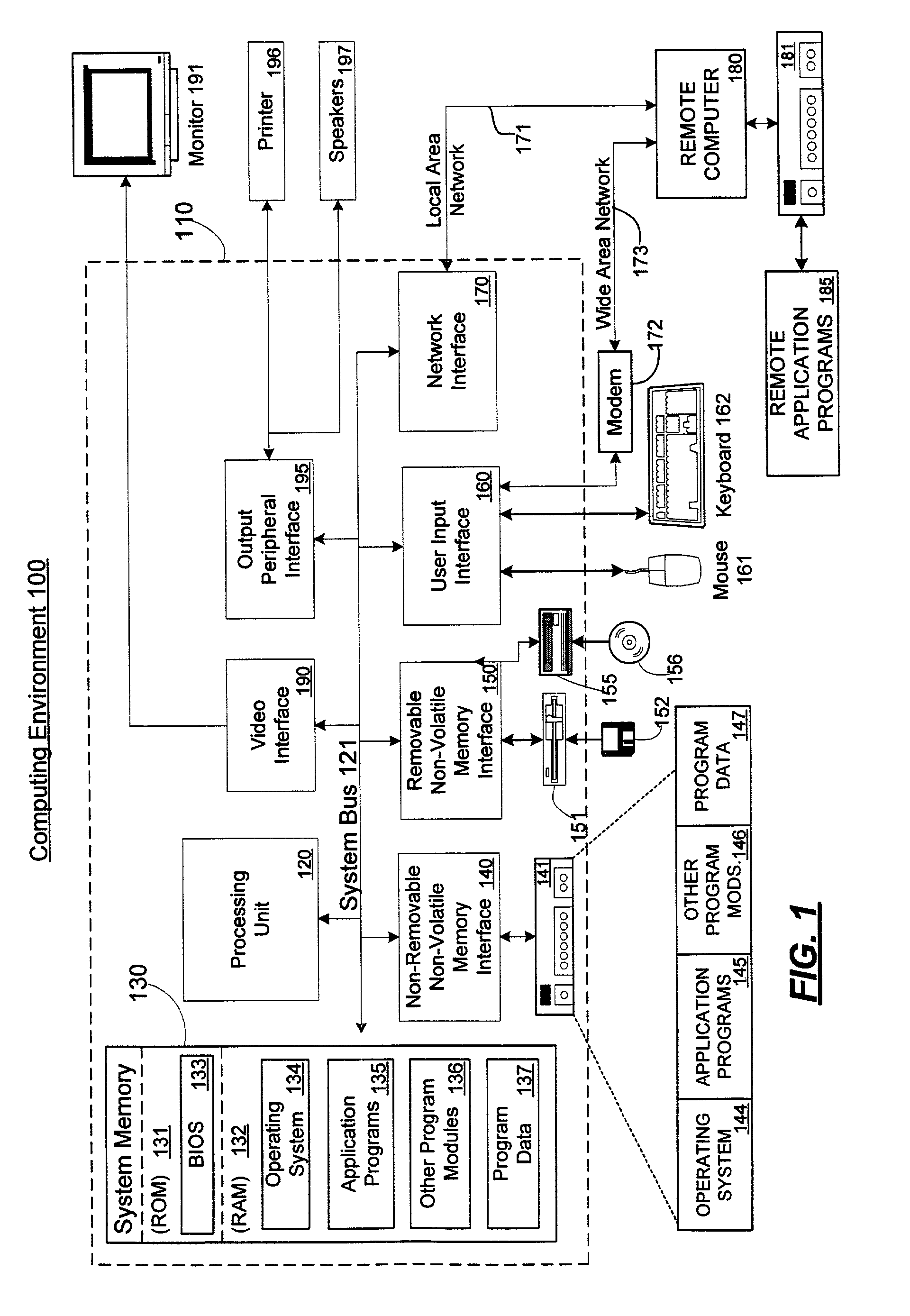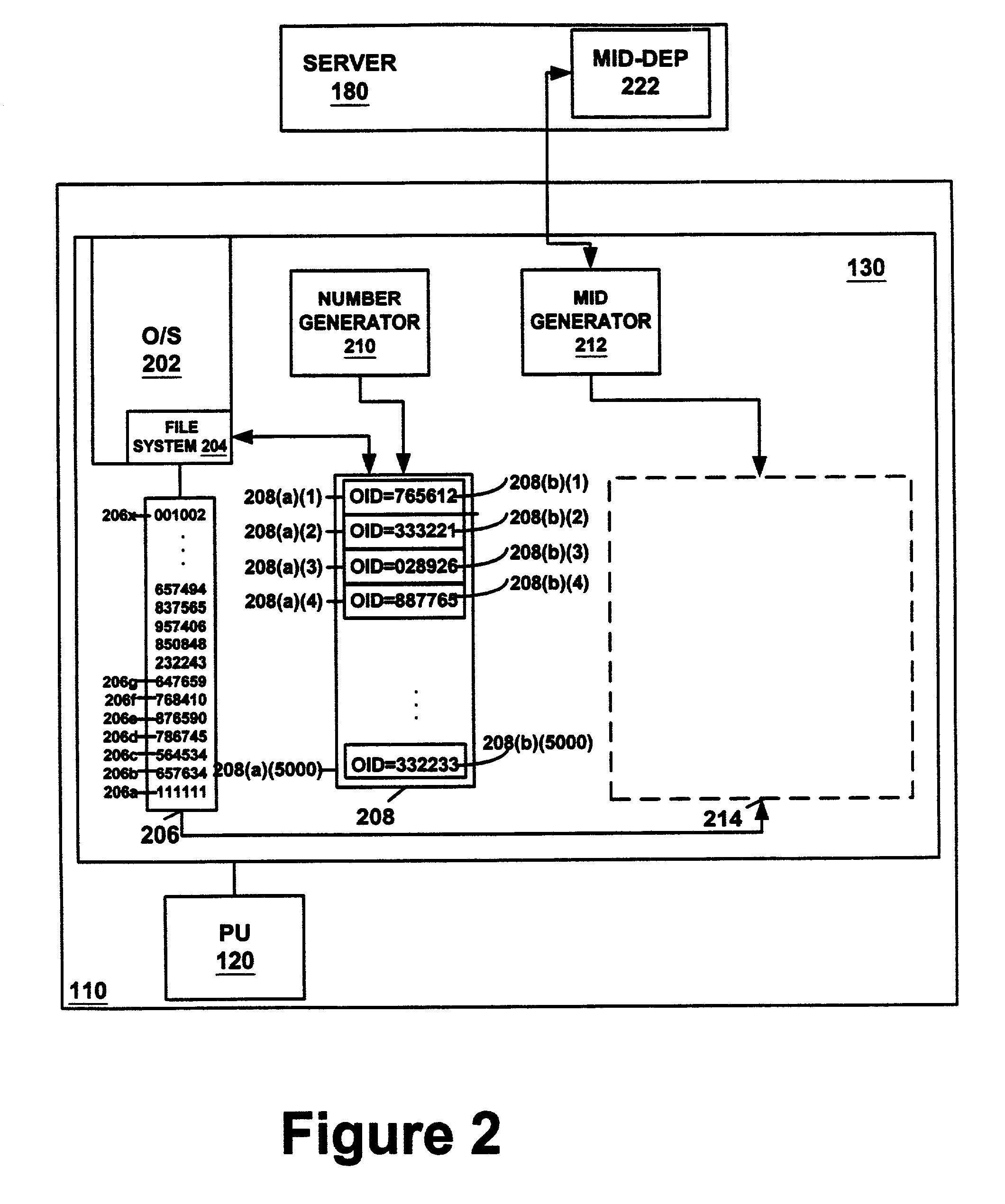Software-generated machine identifier
a machine identification and software technology, applied in the field of computer devices, can solve the problems of affecting the accuracy of machine identification codes, and the likelihood of new mids not matching any previously generated mids, and achieve the effect of increasing the randomness of the list of available object locations
- Summary
- Abstract
- Description
- Claims
- Application Information
AI Technical Summary
Benefits of technology
Problems solved by technology
Method used
Image
Examples
Embodiment Construction
Overview
[0017]By using an innate aspect of an Operating System (O / S) such as the in-memory Windows-CE operating system, an MID can be created that is unique and tamper-proof. The software creating the MID does not deterministically control the final value for the MID because the MID is dependant on a relatively random pre-existing O / S state. MID-dependent software is created based on this state, and the unlikelihood of re-creating this relatively random state makes it unlikely that the MID-dependent software can be ported to another device on which its use is not authorized.
Exemplary Computing Environment
[0018]FIG. 1 illustrates an example of a suitable computing system environment 100 in which the invention may be implemented. The computing system environment 100 is only one example of a suitable computing environment and is not intended to suggest any limitation as to the scope of use or functionality of the invention. Neither should the computing environment 100 be interpreted as...
PUM
 Login to View More
Login to View More Abstract
Description
Claims
Application Information
 Login to View More
Login to View More - R&D
- Intellectual Property
- Life Sciences
- Materials
- Tech Scout
- Unparalleled Data Quality
- Higher Quality Content
- 60% Fewer Hallucinations
Browse by: Latest US Patents, China's latest patents, Technical Efficacy Thesaurus, Application Domain, Technology Topic, Popular Technical Reports.
© 2025 PatSnap. All rights reserved.Legal|Privacy policy|Modern Slavery Act Transparency Statement|Sitemap|About US| Contact US: help@patsnap.com



